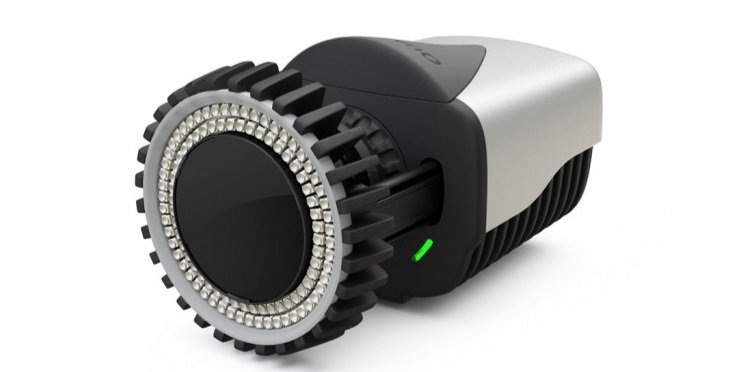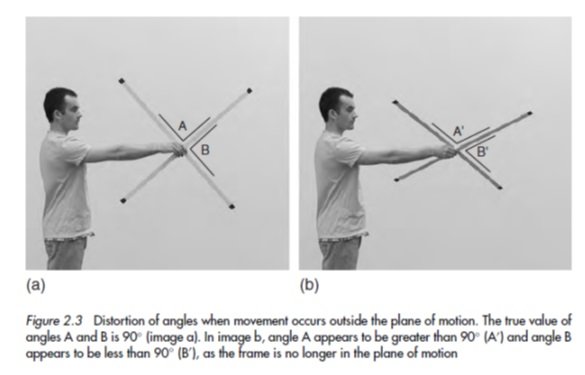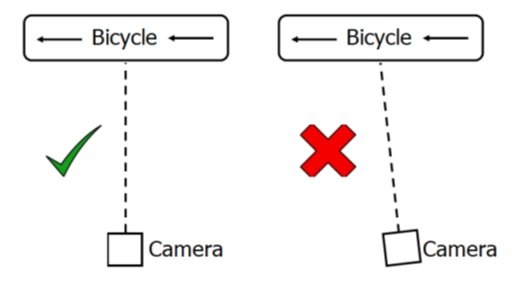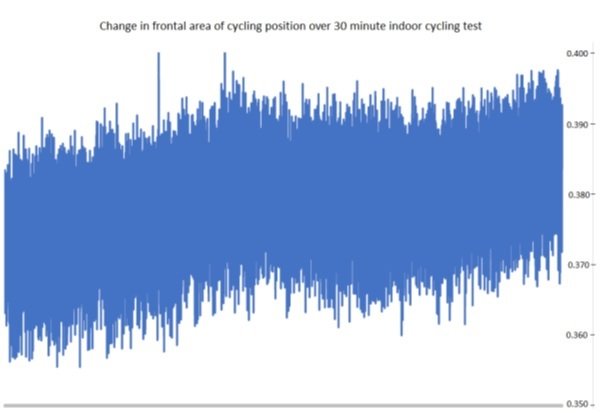The importance of measurement techniques is regularly overlooked within cycling, with many eager to collect as much data as possible, but perhaps not thinking enough about the quality of the data they are aquiring...

Use of data in cycling
The modern athlete is buried in data, with more and more collected about them both in training and around their day to day lives. Many of them are hinging all of their decisions on training and health around these numbers. This is leading more and more to utilisation of various measurement techniques which have questionable accuracy and validity, which is somewhat concerning when this data is used within decision making.
Key areas where we see this occurring with relevance to Bike Fitting are within kinematic analysis of bike positioning and aerodynamic testing. Online groups are being more and more regularly used with this in mind, which of course brings some advantages with access to lots of experience and knowledge – although as with all online forums, there are also of course some less well-informed views exchanged. However, even with some of the well-intentioned analysis, much of the data being considered is perhaps not of a good enough quality to be able to analyse this with any real validity.

Importance of camera positioning
The first way we see this is within video recordings of cycling positions, which we regularly see being posted looking for advice. Many of these videos are taken with the camera not positioned perpendicularly to the plane of the motion to be analysed. We see people then trying to perform kinematic analyses on these videos, regularly trying to measure values such as knee extension for example to try and assess saddle height. However, with the camera not set correctly, this is not something which can be done effectively. This is exacerbated when much of the time the camera is also positioned very close to the movement which is often difficult to avoid when making recordings at home. However, this lack of distance from the camera to the subject creates an even larger angle between the camera and the plane of motion with just slight misplacement of the camera. Biomechanical evaluation of movement in sport explains that ‘Failure to ensure that the optical axis is orthogonal to the plane of motion, even by a few degrees, can have a detrimental effect on the accuracy of the analysis’ (Payton and Bartlett, 2008). This can be seen in a slightly exaggerated way in the image from this textbook below, where it is clear that the 90-degree angles are not viewed correctly due to being out of plane with the camera setup.

(Payton and Bartlett, 2007)
This is something which can be acted upon quite easily with little extra effort from the current recordings being taken. So, with paying a little more attention to camera setup when taking recordings of cycling positions to ensure the camera is perpendicular to the movement being recorded, the data which is obtained can be analysed with much better validity. There are of course other aspects of the camera setup which can be considered to further improve the quality of the data (i.e., exposure, shutter speed, resolution, frame rate, lighting), and this is not even to begin on mentioning areas such as ecological validity of riding with a representative power/cadence to that being done in real world riding or the effects of fatigue on positioning, but this is definitely an easy place to begin without overcomplicating the process.

Cycling aerodynamic analysis
The other area mentioned that we see some questionable data collection techniques are with aerodynamics. Most people are now highly aware of the importance of aerodynamics within cycling, and thus want to try and improve their current setup. This is leading to many trying to analyse their setup in both static and dynamic ways to try and find some room for improvements.
A huge limitation to effective data collection when assessing the aerodynamic properties of a cycling position/setup is the lack of consistency in rider body positioning. This can be an issue both in comparing indoor vs outdoor positioning, as well as with lack of consistency between trials when doing outdoor testing. Given that the athlete themselves contributes by far the largest portion of aerodynamic drag in the system, it is easy for data collected to assess changes in components (i.e., helmet selection/hydration setup) to be masked by the inconsistency of body positioning between trials.
Indoor positional assessment
When looking to find an optimal setup indoors, many use a visual assessment of the position to look at factors such as frontal area, helmet alignment onto the shoulders/back and torso angle to make some assumptions regarding aerodynamics. Whilst these can certainly be factors that will correlate with CdA (the value most often attributed as representing a cyclist’s aerodynamic properties), it is regularly seen that these riders are unable to sustain the positions they are doing indoors whilst in the real world. The difference in requirements on the position with steering/vision and higher force loading on the torso make it much more challenging to sit consistently.
We also have seen repeatedly during longer duration indoor testing that many rider’s positions deteriorate quite considerably over time, with frontal area especially increasing due to loss of control in head positioning and posture through the upper back. This can be clearly seen in the chart below from a test in our studio with a professional triathlete. This shows frontal area changes quite notably over just a 30-minute cycling test, with an increase of around 0.015-0.020m2 which in turn would be around 5-8% increase in CdA.

Outdoor positional assessment
This inconsistency in body positioning also becomes a notable issue when doing outdoor testing, with athletes looking to either compare metrics such as Power:Speed ratios or using aerometers to measure real world CdA. With many riders sitting quite inconsistently in their head/shoulder positioning, it is hard to know entirely whether differences measured are due to changes made to the setup, or just variability of the rider. This is especially the case when riding in unfamiliar positions which may be being trialled for the purposes of the testing (such as lowering cockpit height or adjusting arm pad width) where they body is unused to the new position. This makes it very difficult to determine whether any fluctuations in measured CdA are valid, or just a result of this inconsistent body positioning.
This is compounded further in many testing protocols where riders are not undertaking enough trials of each condition to be able to accurately compare between conditions. Taking more trials with each condition would go some way to mitigating the variability in body positioning, but it is still possible that time to adapt to the new condition might be needed before any valid testing could be performed.


There are also many more ways that the data being collected to compare in this way is perhaps limiting the accuracy of any data analysis (i.e., accuracy of power measurements and accuracy of speed measurements when using GPS), but being more mindful of how body positioning will affect the outcome of these tests certainly needs to be taken into greater consideration, and undertaking as many trials of each condition as possible in as repeatable a situation as possible needs to be a priority.
Summary
Whilst this just scratches the surface of a huge area of measurement techniques within cycling, hopefully this blog helps you with considering more about how the data you are looking at is obtained. Giving you some idea on how you can improve the quality of your own data collection and being more mindful about the validity of the output you are viewing!
References
Payton, C., & Bartlett, R. (2007). Biomechanical Evaluation of Movement in Sport and Exercise: The British Association of Sport and Exercise Sciences Guide. Taylor & Francis.
If you would like any more information about collecting good data we are always happy to chat!